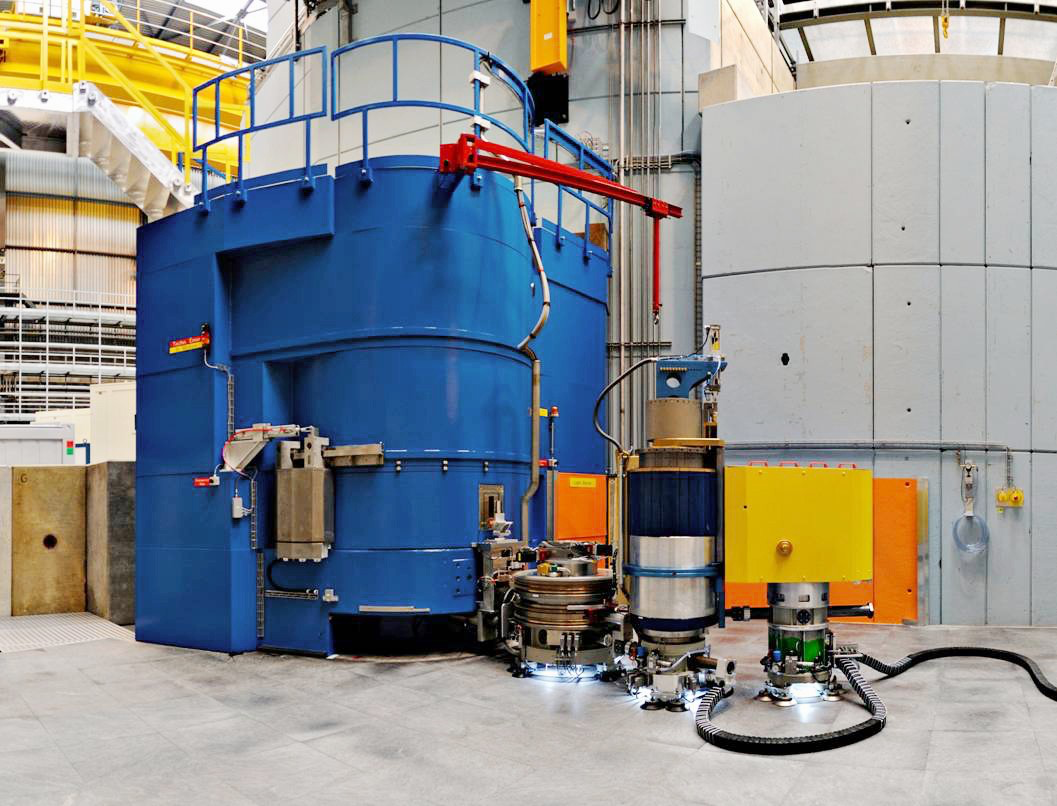The importance of knowing your stripes
A collaboration between three NUM laboratories has found that magnetic ‘stripe order’ in high-temperature superconductors not only co-exists with superconducting order, but might very well be intimately connected with it.
30 years ago this month, Alex Müller and Georg Bednorz received that phone call from Stockholm, informing them that they have been awarded the 1987 Nobel Prize in Physics, “for their important break-through in the discovery of superconductivity in ceramic materials". The cuprate superconductors that Müller and Bednorz had discovered, in 1986, not only conduct electrical currents without any resistance, they do that at considerably higher temperatures than had be thought possible before. The practical implications of the discovery were clear immediately, but explaining just why the electrons in cuprate materials behave in this award-bringing manner, that remains to this day one of the grand challenges of modern solid-state physics. Writing in Physical Review Letters, Zurab Guguchia and colleagues now provide fresh insights in one of the central aspects of that puzzle — how superconductivity and magnetic properties of some cuprates are related to one another.
Show your stripes
In an international effort involving three labs of the NUM section at PSI, Guguchia and his co-workers studied the cuprates La2-xBaxCuO4 and La1.6-xNd0.4SrxCuO4, members of the so-called La214 family. In these compounds, the temperature at which they become superconducting, Tc, drops sharply at a doping level of x = 1/8. This might sounds like unwelcome news, but to understand the behaviour of cuprates, such extreme points are particularly attractive. Correspondingly intense were the experimental efforts over the years to understand these particular compounds. An important finding was that peculiar patterns develop in La214 materials, namely stripe-like structures for both spins and charge. But what these stripes have to do with the superconducting properties, if anything, has been a subject of controversy.
Important new insights come now from the comprehensive study of Guguchia et al. They have turned to another method — that is, other than changing the doping level — to tune the properties of La214 cuprates: They substituted some of the magnetic copper (Cu) ions with non-magnetic zinc (Zn) ions. That procedure is known to lower Tc in cuprates, in sharp contrast to what is seen in other, ‘conventional’ superconductors. And there have been indications that Zn substitution destroys stripe order in La214 cuprates. But that evidence has been rather indirect and not conclusive.
Collaborative orders
In contrast, the PSI-led team has now undertaken a systematic study of how stripes evolve when the Zn content is changed. Using muon-spin rotation and neutron scattering experiments, they observed that the temperature at which the stripes form decreases linearly as the amount of Zn is increased. When some 4% of the Cu ions were substituted, stripe order disappeared altogether. Remarkably, this behaviour mirrors how Tc changes when more and more Zn impurities are introduced, suggesting that stripe order and superconductivity are intertwined. In other words, superconducting and stripe order not only co-exists in the cuprates studied, but they seem to be correlated. The mechanisms behind this correlation remain to be clarified. Encouragingly, there are theoretical models that predict the sort of intertwining seen in this study. And as stripe order might be a general phenomenon in cuprates, beyond the La214 family, there are grounds for hope that these results might bring us closer to solving the big puzzle Müller and Bednorz have presented us with.
Collaborative labs
That the complementary response of stripe order and superconductivity to non-magnetic impurities in La214 cuprates could be studied in such unprecedented detail has only been possible thanks to the collaborative effort of three NUM labs. The samples were produced in the Laboratory for Neutron and Muon Instrumentation (LIN) and subsequently studied in beamlines run by the Laboratory for Muon Spin Spectroscopy (LMU) and the Laboratory for Neutron Scattering and Imaging (LNS). The team was complemented by scientists from the University of Zurich, from Columbia University and Brookhaven National Laboratory (US) and from Tbilisi State University (Georgia).
